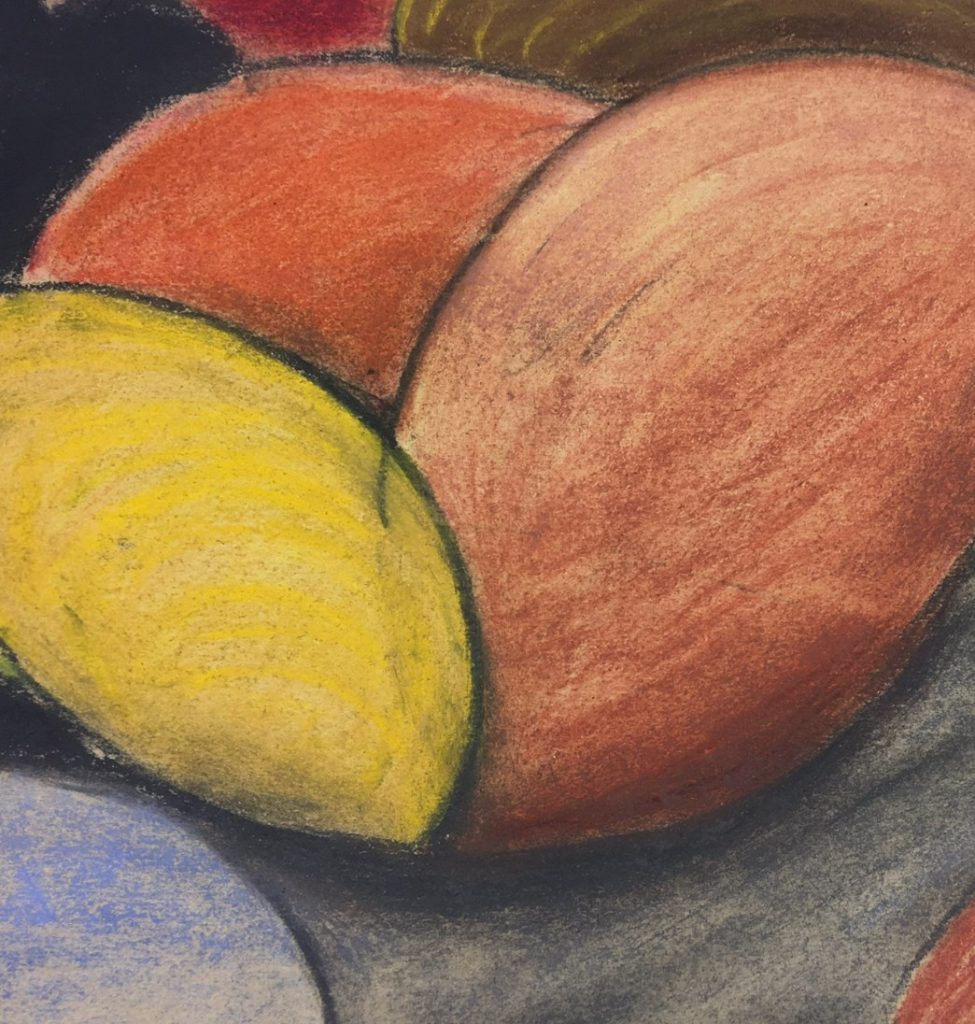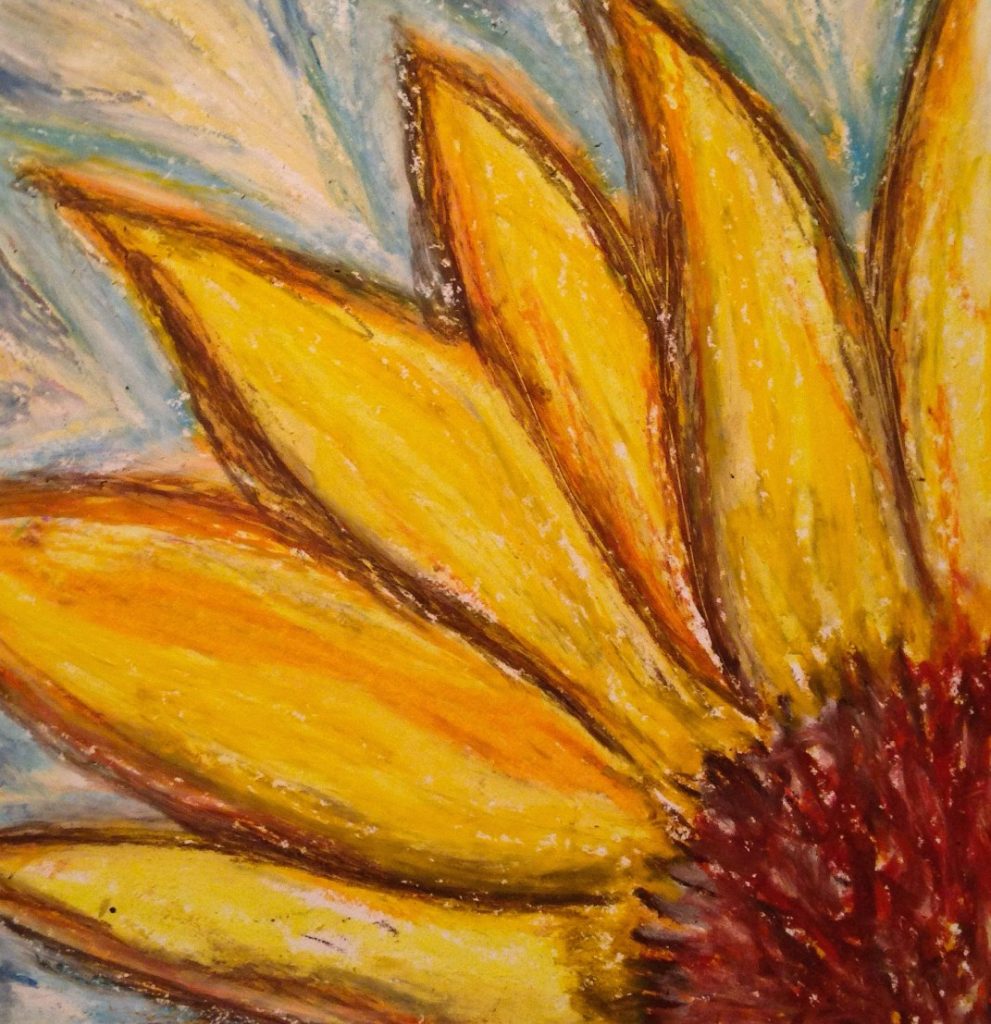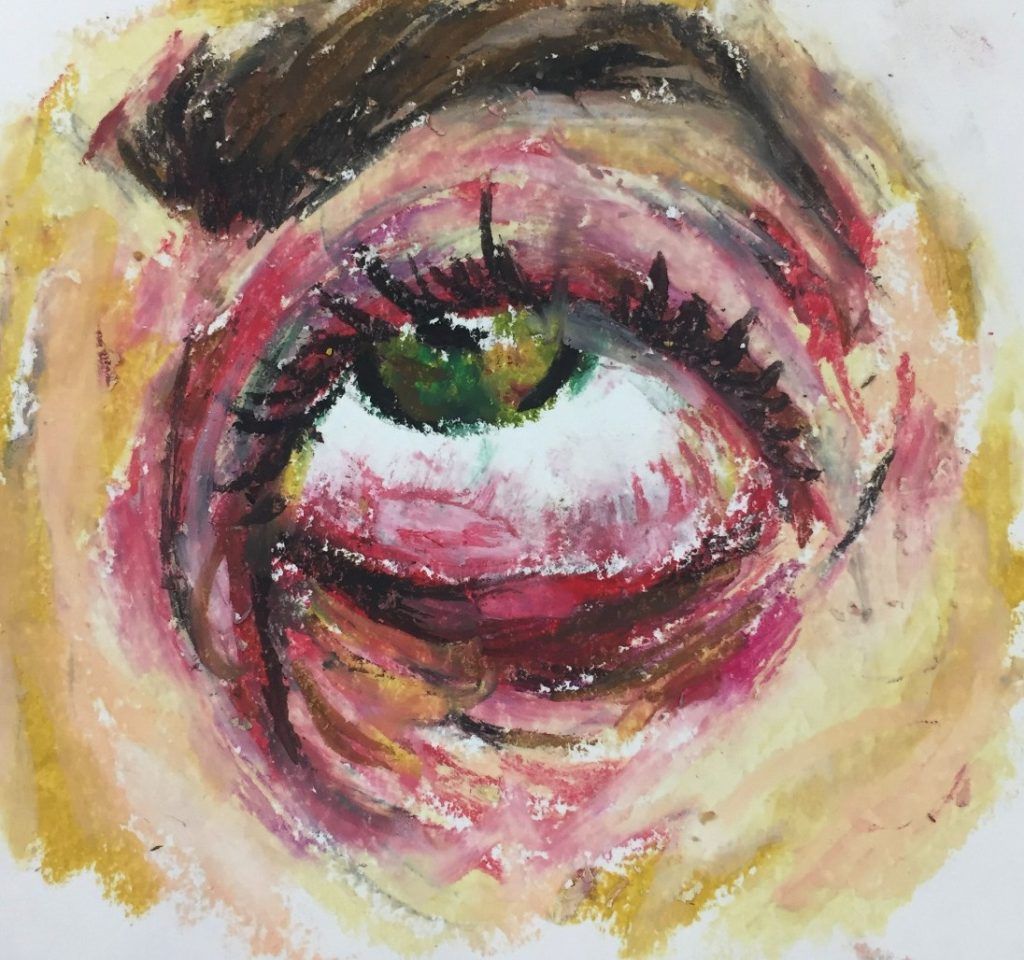Oil pastels and soft pastels, while both pastels, offer distinct artistic journeys. Both boast vibrant colors and a unique drawing style, but their strengths and ideal techniques differ greatly. Let’s delve into the benefits and techniques of each medium to empower your artistic choices.
Part 1: Oil Pastels – Vibrant and Versatile
Bold Expression and Layering:

Oil pastels, with their waxy texture, excel at creating bold and expressive marks. They glide smoothly on the surface, allowing for confident strokes and dramatic color application. Unlike soft pastels, oil pastels can be layered effectively to create depth and richness. The waxy binder allows subsequent layers to build upon the previous ones, resulting in a vibrant and textured artwork.
Surface Exploration and Minimal Fixing:
Oil pastels, with their waxy consistency, provide artists with a captivating array of options in terms of surface versatility. These versatile mediums can adhere to a wide range of substrates, including traditional pastel paper, canvas, wood, and even metal. This characteristic opens the door for innovative mixed-media creations and diverse artistic experimentation, empowering artists to explore unconventional surfaces and push the boundaries of their creative expression with oil pastels.
Furthermore, the permanence of oil pastels is a notable advantage. Once applied, oil pastels dry to a relatively permanent state, eliminating the need for fixative in most cases. This feature not only streamlines the creative process but also ensures the longevity and durability of the artwork, offering artists greater peace of mind while working with oil pastels on a variety of surfaces.
The unique surface versatility and permanence of oil pastels provide artists with boundless opportunities for experimentation and creative exploration, enabling them to push the boundaries of traditional artistic expression and create captivating mixed-media artworks with lasting impact.

Part 2: Soft Pastels – Blending and Delicate Details
Seamless Blending and Dreamy Effects:
Soft pastels, with their chalk-like binder, are masters of blending. Their powdery texture allows for effortless transitions between colors, creating hazy, dreamlike effects. This makes them ideal for landscapes with subtle color variations, portraits with soft shading, and capturing atmospheric moods. Techniques like scumbling, where colors are lightly layered, further enhance the ethereal quality achievable with soft pastels.
Detailed Work and Precise Shading:
Soft pastels are celebrated for their capacity to hold a sharp point, rendering them ideal for intricate and detailed work. This unique characteristic allows artists to create fine lines and intricate shading, making soft pastels particularly well-suited for rendering realistic textures and capturing the subtle nuances of a subject. This precision in application makes them a sought-after choice for artists focusing on portraiture, botanical illustrations, and elaborate drawings that demand intricate details and lifelike textures. Additionally, the ability of soft pastels to produce a wide range of tonal values adds to their versatility, enabling artists to convey depth and dimension in their artwork. The fine lines and detailed shading achievable with soft pastels make them a favored medium for capturing the intricacies and nuances of various subjects, earning them a prominent place in the repertoire of many artists seeking to convey realism and intricate details in their creations.

Part 3: Additional Considerations for Oil and Soft Pastels
Cleaning and Maintaining Your Artwork:
Oil pastels, owing to their waxy consistency, may leave a subtle residue when erased. Despite this, they are less susceptible to smudging and can be easily cleansed from surfaces with a damp cloth. This characteristic makes them an efficient choice when working on artwork, as they offer a cleaner and more manageable creative process. On the other hand, soft pastels, with their loose pigment, are more prone to smudging, which presents challenges during the artistic process. However, artists can utilize specialized tools such as a kneaded eraser or dedicated pastel eraser to eliminate unwanted color. Care must be taken when using these erasers to avoid additional smudging and maintain the integrity of the artwork. The distinct erasing characteristics of oil and soft pastels require artists to adopt different approaches to manage unwanted marks, smudging, and residue, thus enhancing their understanding and mastery of each pastel medium.
Choosing the Right Paper:
Choosing the right paper is crucial to ensure an optimal pastel experience. Soft pastels necessitate a surface with a pronounced texture, known as tooth, to effectively grip the pigment. Specialized pastel paper tailored for soft pastels, featuring a pronounced tooth and exceptional texture, is ideal for creating artwork with these pastels. The textured surface allows the soft pastel to adhere and layer effectively, enabling artists to achieve rich and vibrant colors with intricate details.

Conversely, oil pastels, due to their waxy nature, offer greater surface versatility and can be used on a variety of substrates. While traditional pastel paper is suitable for oil pastels, artists can also experiment with other surfaces such as canvas primed with a toothy gesso to create added texture for the artwork. This adaptability allows for diverse applications and artistic experimentation when using oil pastels. By understanding the unique surface requirements of soft and oil pastels, artists can make informed choices regarding the selection of appropriate substrates to support their creative vision and maximize the potential of each pastel medium.
Part 4: Unleashing Your Creativity – Choosing the Perfect Pastel
Artistic Vision and Subject Matter:
The best pastel for you hinges on your artistic vision and subject matter. Oil pastels are ideal for creating bold, expressive pieces with vibrant colors and a focus on texture. They excel in landscapes, abstract art, and capturing a sense of movement. Soft pastels, with their blending capabilities and detailed lines, are perfect for capturing subtle nuances, creating realistic portraits, and rendering delicate textures.
Experience Level and Personal Preference:

Soft pastels offer more control for detailed work, making them a good choice for beginners. Oil pastels, with their bolder application, might require some practice for blending techniques. However, they can create striking results quickly, making them appealing to artists of all levels. Ultimately, the choice between oil and soft pastels is a personal one. Experiment with both mediums to discover which one unlocks your creative potential and allows you to express your artistic vision in the most compelling way.





